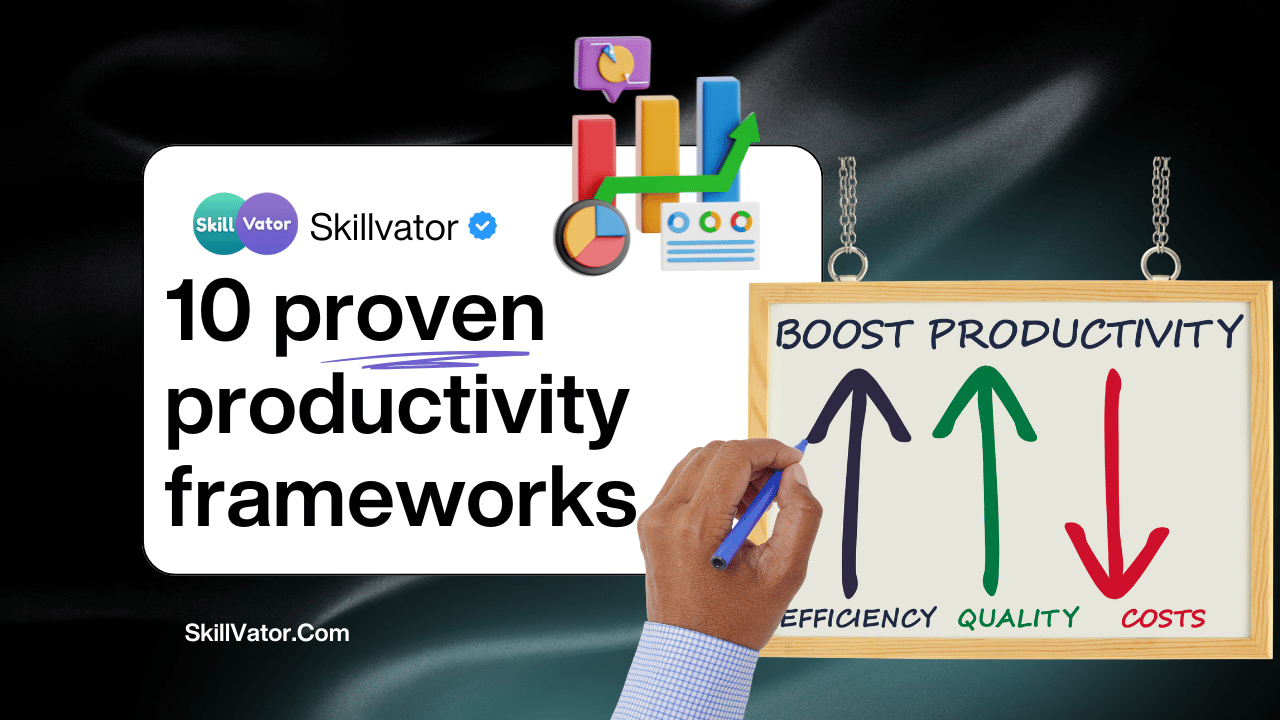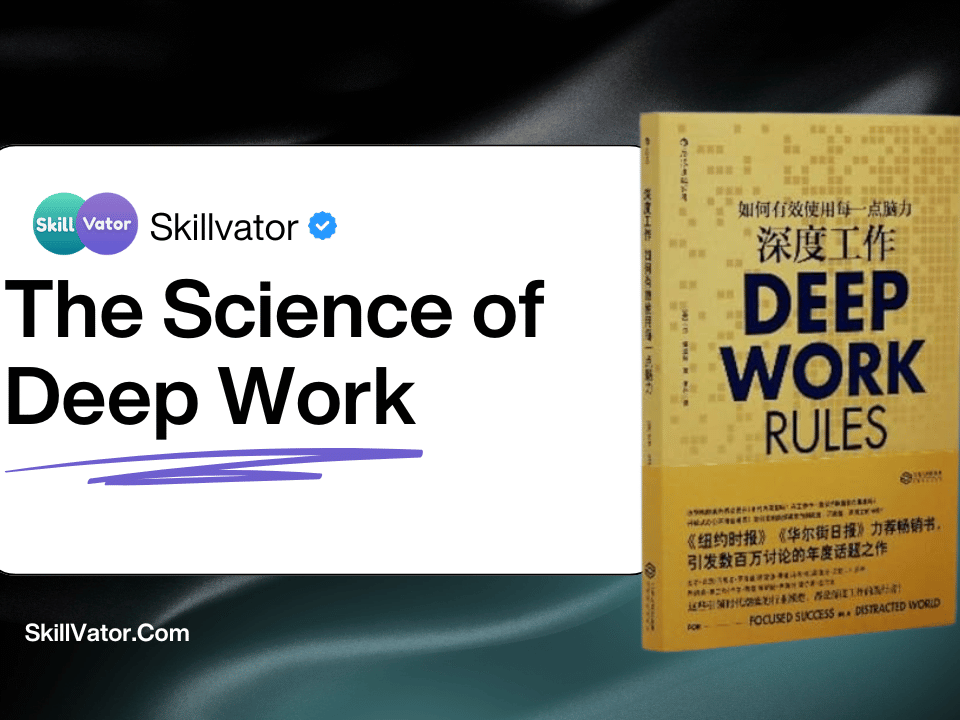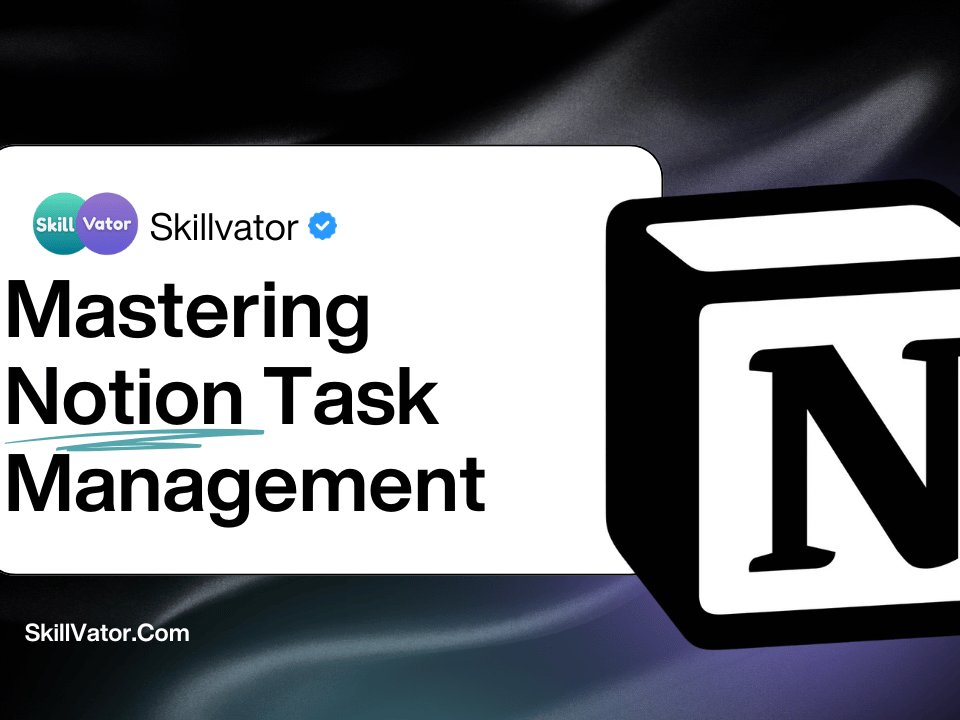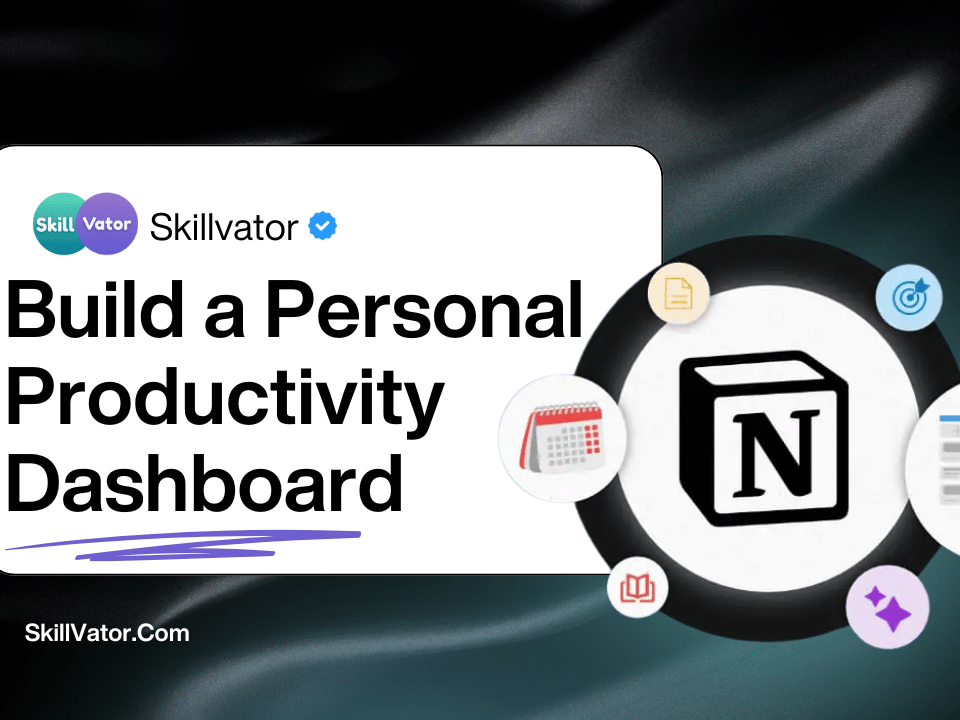Let’s be honest — staying productive today can feel like a full-time job in itself. Between emails, meetings, deadlines, and endless notifications, it’s easy to end the day wondering, “What did I even accomplish?”
If you’ve ever felt like you’re busy but not productive, you’re not alone. The truth is, most people don’t have a work problem — they have a system problem.
That’s where productivity frameworks come in.
At Skillvator, we believe productivity isn’t about doing more — it’s about doing what matters most with clarity, focus, and balance. Frameworks help you organize your time, energy, and priorities so you can work smarter, not harder.
In this guide, we’ll break down 10 proven productivity frameworks — from the classic Eisenhower Matrix to modern systems like PARA and Time Blocking — so you can find what works best for your workflow.
Let’s dive in.
10 proven productivity frameworks
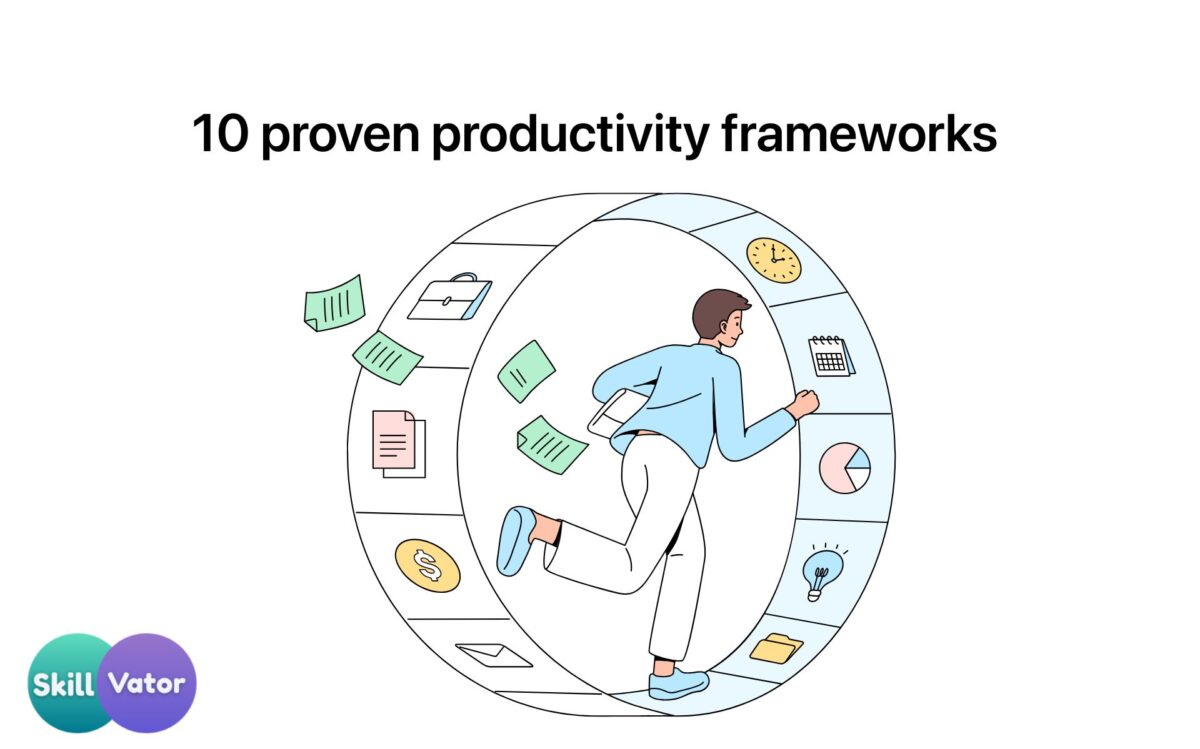
🧠 1. The Eisenhower Matrix: Prioritize What Truly Matters
Best For: Prioritization & decision-making
Core Idea: “What is important is seldom urgent, and what is urgent is seldom important.” — Dwight D. Eisenhower
The Eisenhower Matrix helps you focus on what actually drives results by dividing tasks into four categories:
| Quadrant | Focus | Example |
|---|---|---|
| 1. Urgent & Important | Do it now | Deadline today, client call |
| 2. Important but Not Urgent | Schedule it | Strategic planning, learning new skill |
| 3. Urgent but Not Important | Delegate it | Routine admin work |
| 4. Not Urgent & Not Important | Eliminate it | Social scrolling, busywork |
How to Use It:
-
List all your tasks.
-
Sort them into the four quadrants.
-
Focus on Quadrant 2 — where growth happens.
Skillvator Tip:
Review your matrix weekly in Notion or Trello. It’s a simple yet powerful way to ensure your days align with your bigger goals.
⏳ 2. The Pomodoro Technique: Beat Procrastination with Timed Focus
Best For: Beating procrastination & boosting focus
Core Idea: Work with time, not against it.
Created by Francesco Cirillo, the Pomodoro Technique uses short bursts of focused work followed by breaks.
How it Works:
-
Pick a task.
-
Set a timer for 25 minutes (one Pomodoro).
-
Work without interruption.
-
Take a 5-minute break.
-
After 4 Pomodoros, take a 15–30-minute longer break.
This cycle helps maintain focus and prevent burnout.
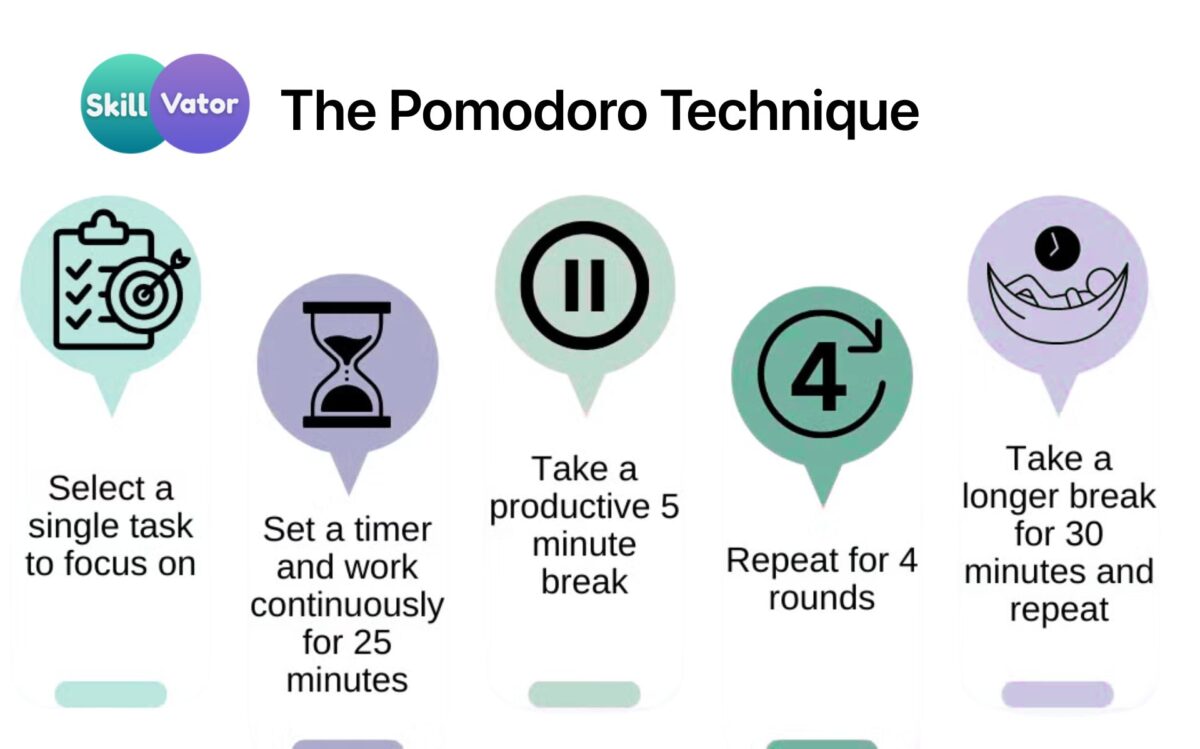
Skillvator Tip:
Use apps like Pomofocus, Tide, or the Skillvator Focus Timer Template in Notion to track your sessions.
🪜 3. The Getting Things Done (GTD) System: Master Your Workflow
Best For: Complex workflows & multitaskers
Core Idea: Get tasks out of your head and into a trusted system.
Developed by David Allen, the GTD Method is built around 5 steps:
-
Capture everything — tasks, ideas, reminders.
-
Clarify what each item means (is it actionable?).
-
Organize tasks into projects or contexts.
-
Reflect regularly (weekly reviews are key).
-
Engage — focus on what matters right now.
Why It Works:
It reduces mental clutter and gives you a clear overview of what’s on your plate.
Skillvator Tip:
Combine GTD with Notion or Todoist — so everything lives in one digital brain.
🗂️ 4. The PARA Method: Organize Your Digital Life
Best For: Knowledge workers & digital creators
Core Idea: Organize by action, not by type.
Developed by Tiago Forte, the PARA Method stands for:
-
Projects: Short-term efforts with goals
-
Areas: Long-term responsibilities (health, career, finance)
-
Resources: Helpful materials, ideas, or notes
-
Archives: Completed or inactive items
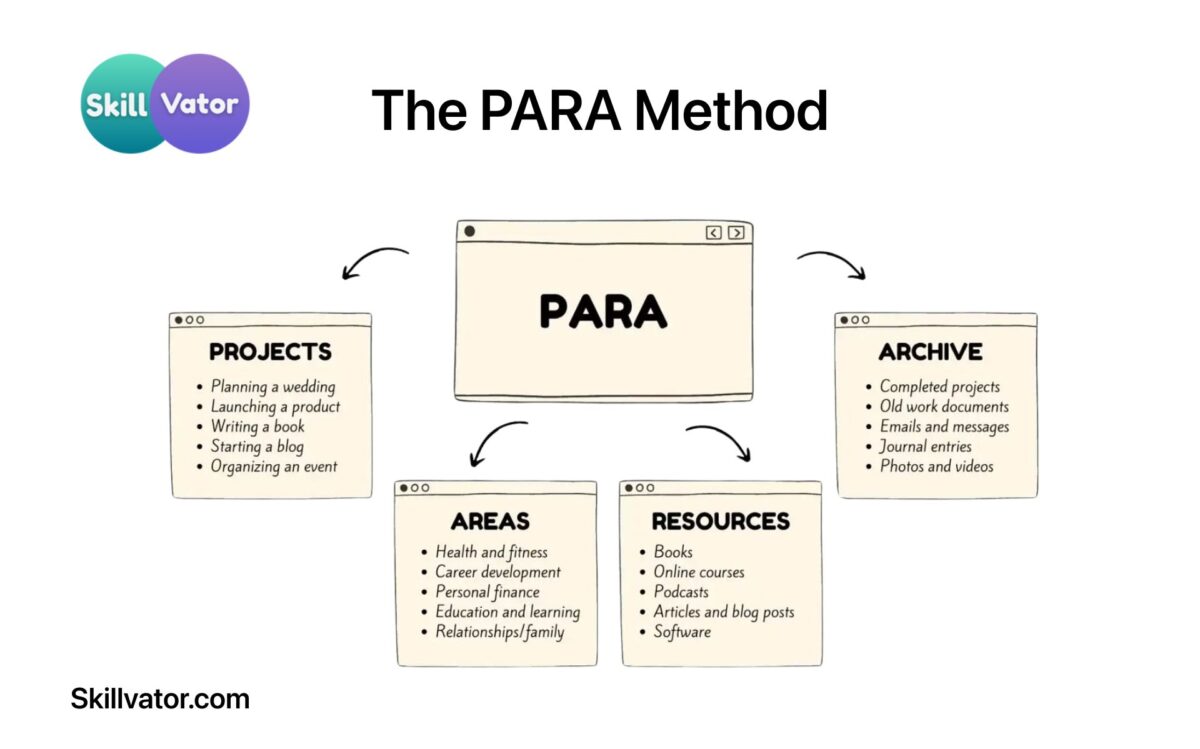
The PARA Method – Productivity Frameworks
Why It Works:
It gives you clarity and consistency across all tools — Notion, Google Drive, or your email.
Skillvator Tip:
Set up your PARA system inside Notion. It’s the ultimate structure for digital minimalists.
🧭 5. OKRs (Objectives & Key Results): Align Goals with Action
Best For: Teams & business growth
Core Idea: Measure what matters.
Popularized by Google, OKRs help you turn big goals into measurable outcomes.
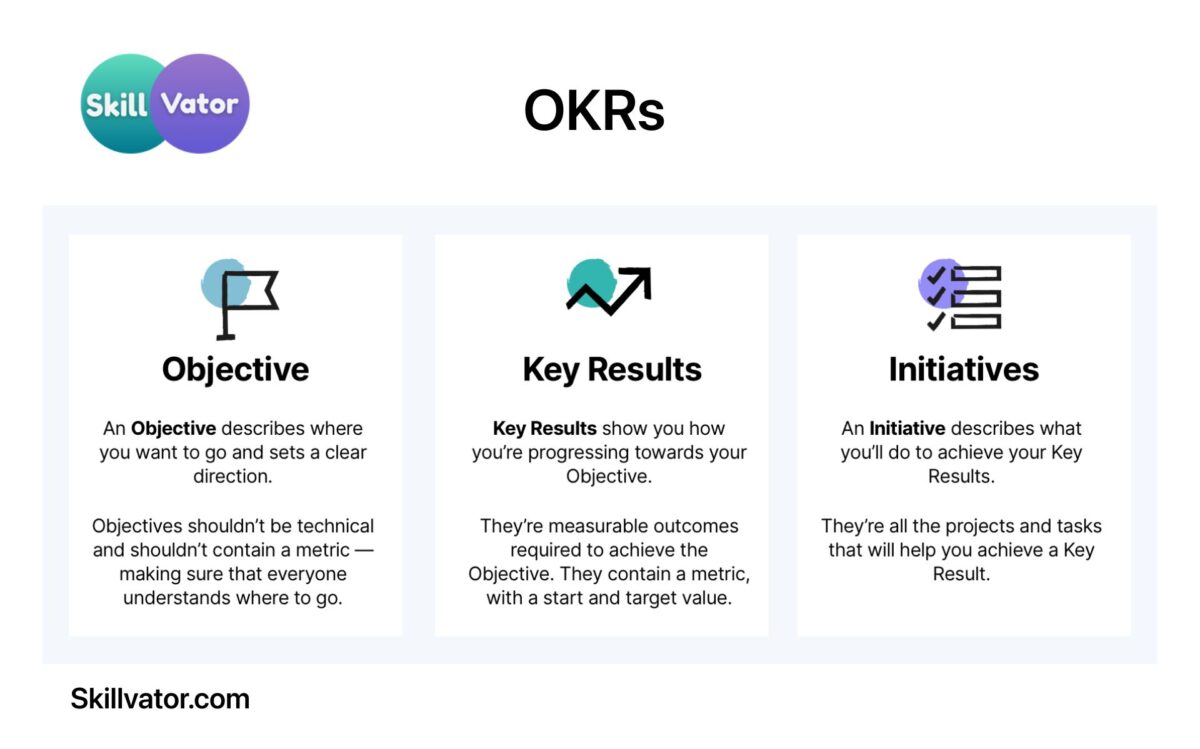
OKRs – Productivity Frameworks
Structure:
-
Objective: What you want to achieve
-
Key Results: How you’ll measure success
Example:
-
Objective: Improve team productivity
-
Key Results:
-
Complete 90% of sprint tasks on time
-
Reduce meeting time by 25%
-
Launch new workflow system
-
Skillvator Tip:
Review OKRs monthly. Keep them ambitious but achievable — the sweet spot for growth.
📅 6. Time Blocking: Design Your Ideal Workday
Best For: Busy professionals & freelancers
Core Idea: If it’s not scheduled, it won’t get done.
Time Blocking means assigning specific blocks of time to specific tasks — so you control your day, not the other way around.
Example Schedule:
| Time | Task |
|---|---|
| 8:00–10:00 | Deep Work (writing, design, coding) |
| 10:00–11:00 | Meetings |
| 11:00–12:30 | Emails & admin |
| 2:00–4:00 | Project work |
| 4:00–5:00 | Learning or review |
Skillvator Tip:
Add “focus blocks” to your calendar and protect them like meetings. You’ll be shocked how much more you get done.
🧩 7. The Ivy Lee Method: Simple and Powerful Prioritization
Best For: Overthinkers who need clarity
Core Idea: Simplicity beats complexity.
Created in 1918 by productivity consultant Ivy Lee, this method is delightfully simple:
-
Write down 6 important tasks for tomorrow.
-
Rank them by importance.
-
Start with the first one — don’t move on until it’s done.
-
Repeat daily.
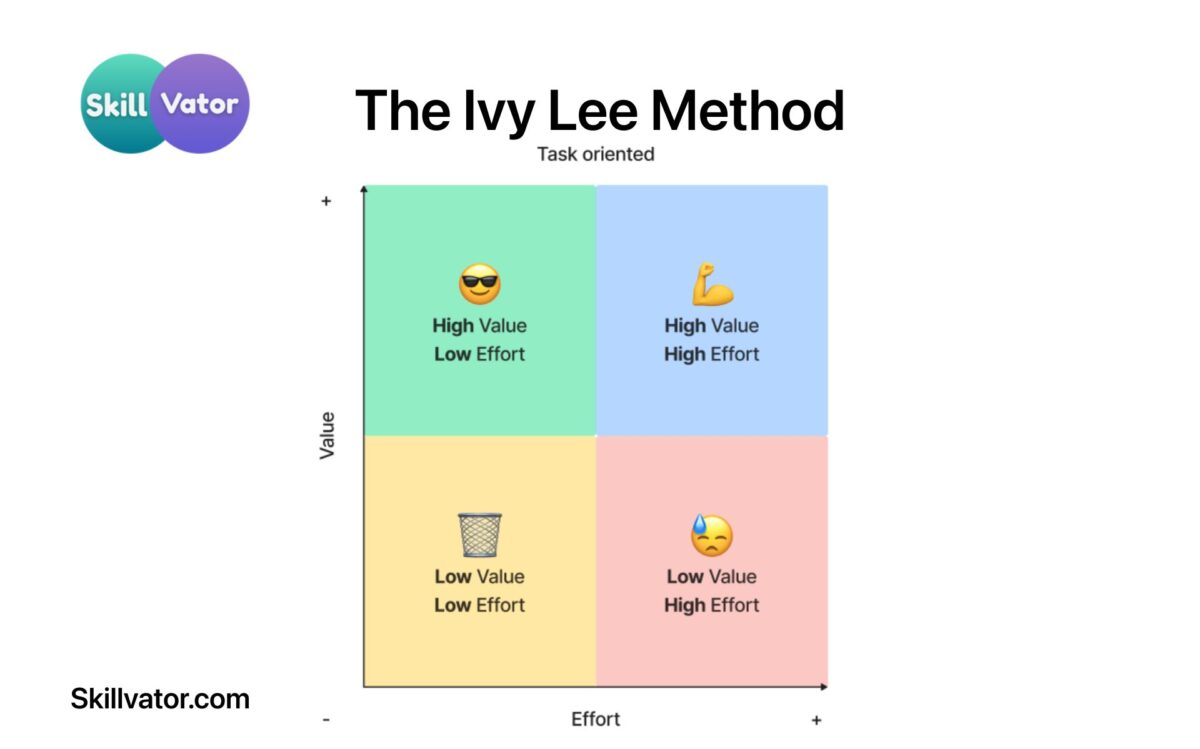
The Ivy Lee Method – Productivity Frameworks
Why It Works:
It eliminates decision fatigue and creates laser focus.
Skillvator Tip:
Use the Ivy Lee Method with your morning coffee — it’ll set your day up for success.
🧱 8. The 2-Minute Rule: Stop Procrastinating Instantly
Best For: Building momentum
Core Idea: If it takes less than two minutes, do it right now.
This simple rule, also from David Allen’s GTD, helps break the inertia of procrastination.
When a small task appears (reply to an email, file a document, send a message) — do it immediately.
Skillvator Tip:
Use this rule for “micro-tasks” that otherwise pile up and drain mental energy.
🔁 9. The 1-3-5 Rule: Structure Your Day for Real Results
Best For: Daily planning & balance
Core Idea: You can’t do everything — but you can do what matters most.
Structure:
-
1 big task (high impact)
-
3 medium tasks (important but smaller)
-
5 small tasks (quick wins)
Example:
-
1 Big: Finish project proposal
-
3 Medium: Client call, blog outline, update dashboard
-
5 Small: Email replies, schedule meeting, order supplies, plan tomorrow, review analytics
Why It Works:
It balances ambition with realism.
Skillvator Tip:
Create a 1-3-5 daily planner in Notion — or grab Skillvator’s free template.
🧍♀️ 10. The 80/20 Rule (Pareto Principle): Work Smarter, Not Harder
Best For: Maximizing impact
Core Idea: 80% of results come from 20% of efforts.
This principle helps you identify and focus on high-leverage activities.
How to Apply It:
-
Identify the top 20% of tasks that deliver 80% of results.
-
Eliminate or delegate the rest.
-
Review regularly to keep your focus sharp.
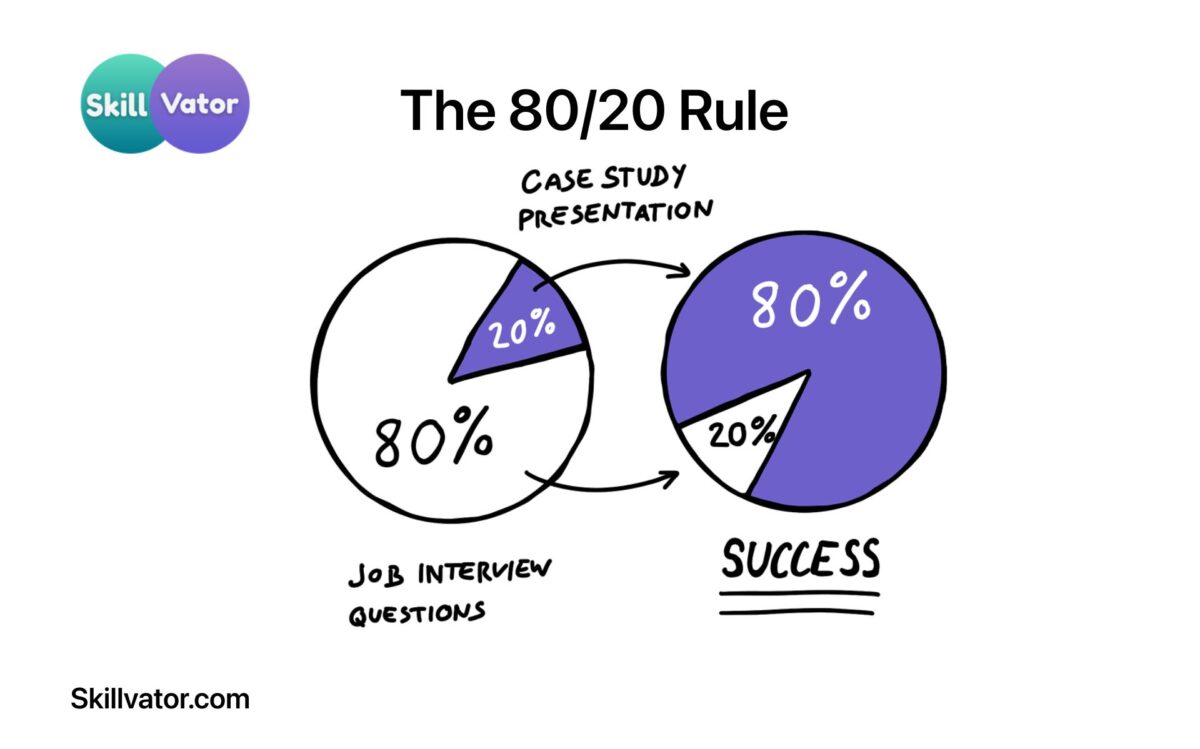
The 8020 Rule – Productivity Frameworks
Skillvator Tip:
Ask yourself daily: What’s the one thing I can do today that makes everything else easier or unnecessary?
💡 How to Choose the Right Framework for You
Not every method fits every person — and that’s okay!
Here’s a quick guide to help you decide:
| Goal | Best Framework |
|---|---|
| Prioritization | Eisenhower Matrix, Ivy Lee |
| Focus & flow | Pomodoro, Time Blocking |
| Complex project management | GTD, PARA |
| Goal alignment | OKRs |
| Reducing overwhelm | 1-3-5 Rule, 2-Minute Rule |
| Maximizing impact | 80/20 Rule |
Start by testing one or two frameworks for a week. Mix, match, and customize until it fits your lifestyle.
🚀 Building Your Personal Productivity System
Once you’ve found your favorite methods, combine them into your Skillvator Productivity Stack:
-
Eisenhower Matrix → Prioritize weekly.
-
Time Blocking → Plan your calendar.
-
Pomodoro Technique → Manage focus.
-
GTD / PARA → Organize tasks and projects.
-
1-3-5 Rule → Structure your day.
By stacking frameworks, you create a personalized system that adapts to your workflow — not the other way around.
5 Daily Habits for Productivity Mastery
-
Start with intention: Write your top 3 priorities every morning.
-
Protect deep work hours: No meetings or messages.
-
Reflect daily: Ask, “What worked well today?”
-
Declutter weekly: Review and reset your workspace.
-
Rest intentionally: Productivity thrives on recovery.
Conclusion: Systems Build Success
Productivity isn’t about being perfect — it’s about being intentional.
When you build systems that align with your goals, your focus becomes effortless, your workflow smoother, and your results more meaningful.
At Skillvator, we believe productivity isn’t just a skill — it’s a mindset.
Try one of these frameworks this week, refine what works for you, and remember:
Consistency beats intensity every time.
Your best work starts with the right system — and Skillvator is here to help you build it.


